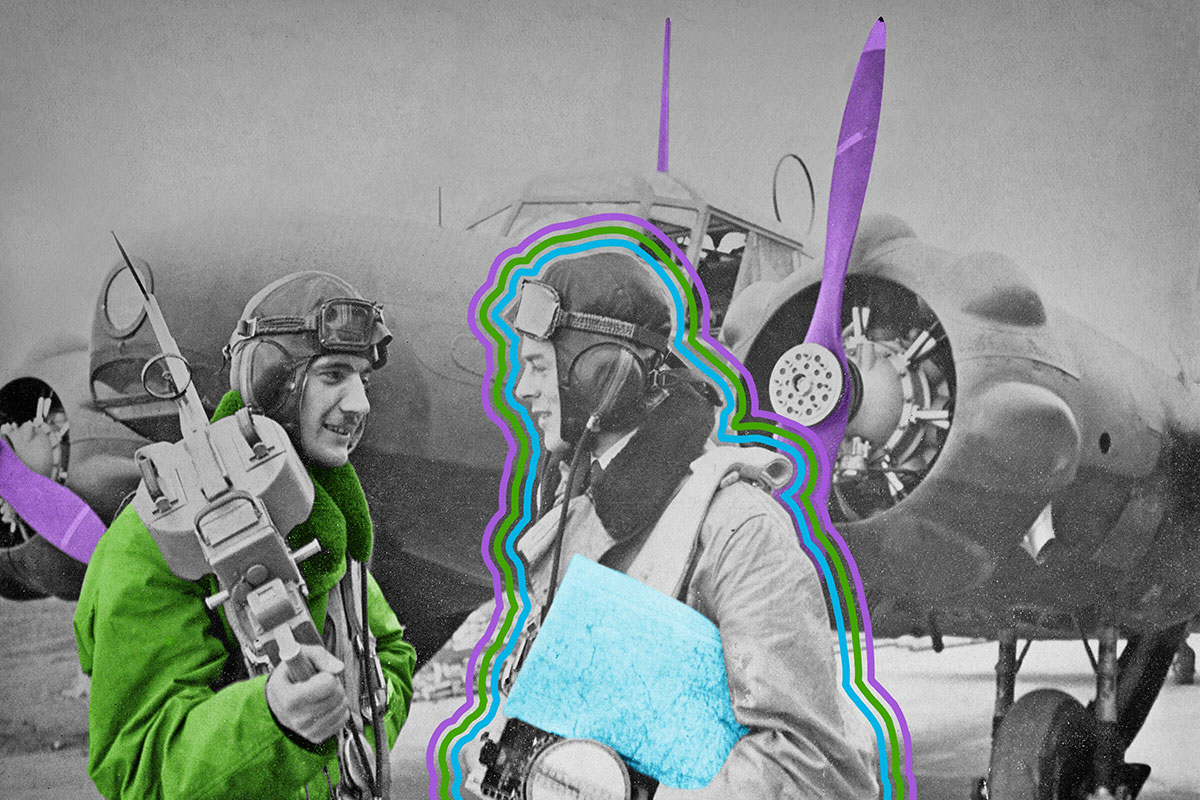
Royal Air Force WWII uniforms included a pants button that served as a compass.
Tiny, hidden survival tools packed into the waistband of your pants may sound like something fantastical from a spy movie, but in the case of British wartime pilots, they were a reality. During World War II, the Royal Air Force sent its aviators skyward with all the tools they’d need to complete a mission, along with a few that could help them find their way home if they crash-landed behind enemy lines. One of the smallest pieces of survival gear pilots carried was a compass built into the button of their trousers.
Three months after entering World War II, the British military launched its MI9 division, a secret intelligence department tasked with helping service members evade enemy forces or escape capture. Between 1939 and 1945, masterminds at MI9 created a variety of intelligence-gathering and survival tools for troops, such as uniform-camouflaging dye shaped like candy almonds, ultra-compressed medications packed inside pens, and button compasses. The discreet navigational tools were typically made from two buttons, the bottom featuring a tiny needle. When balanced on the spike, the top button acted as a compass that rotated with the Earth’s poles; two dots painted on the metal with luminous paint represented north, and one indicated south.
MI9 distributed more than 2.3 million of its button compasses during the war. They could be paired with secretive maps that were smuggled to captured service members inside care packages delivered to prisoner-of-war camps. Often printed on silk for durability and waterproofing, the 44 different maps (sent to different camps based on location) were tucked discreetly into boot heels and board games. The ingenuity worked — by the war’s end, MI9 was credited with helping more than 35,000 Allied soldiers escape and make their way home.
Buttons can be an innocuous way to add panache to a piece of clothing … unless you were a colonist living in Massachusetts during the 17th century, that is. Choosing the wrong type of buttons for your garment during that time could have landed you in court and required paying a fine. Puritans in Massachusetts during the 1600s were ruled by a series of sumptuary laws, aka legal codes that restricted how people dressed and interacted with society based on moral or religious grounds. Massachusetts passed its first sumptuary law in 1634, prohibiting long hair and “new fashions” (aka overly swanky clothes), and five years later even banned short-sleeved garments. By 1652, the colony further restricted lower-wage earners from wearing “extravagant” accessories such as silks, fine laces, and gold or silver buttons, unless they had an estate valued at more than 200 British pounds — more than $38,000 in today’s dollars. However, the law did include some loopholes: Magistrates, public officers, and militia members (and their families) were free to choose buttons and other adornments without fear of penalty, as were the formerly wealthy and those who had advanced education.

